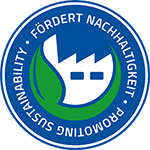
FMEA
MPDV Mikrolab GmbH

Failure mode and effects analysis
FMEA is not only a standard part of product development and the Smart Factory in the automotive industry. The risk management that can be supported with FMEA is also mandatory in medical technology. Failure Mode and Effects Analysis also brings many benefits to the unregulated sector.
The mApp FMEA supports product and process FMEAs defined in accordance with VDA, for example. You can define teams to work together on so-called function networks. To do this, you can assign system or process elements, functions, characteristics, failures and actions to the specific FMEAs. You identify links between failures, causes and effects to create a failure network. Different versions can be maintained for each measure in order to document the optimization process.
You can use either the risk priority number (RPN) or a task priority (AIAG & VDA 2019) as basis for the risk analysis. Task priority can be displayed in a risk matrix.
FMEAs can be displayed and printed in a report based on VDA specifications.
Your benefits
You identify possible errors before they occur and take appropriate measures to improve their detection. As a result, you increase the quality of your products already in the run-up to production.
FMEA promotes sustainability
As part of the Failure Mode and Effects Analysis, possible failure causes in the manufacturing of a product are identified in advance. For each failure cause, different measures are defined aiming at detecting, correcting, and eliminating failures in future. A systematic FMEA process will finally lead to zero defect manufacturing.
Technical information
The mApp FMEA is part of the Quality Management category of HYDRA X.
The mApp uses and stores data in the Virtual Production Reality (ViPR) of MPDV's Manufacturing Integration Platform (MIP).
FMEA in the MIP ecosystem
FMEA data can be used in inspection planning. Inspection results are also helpful to optimize the FMEA. MPDV also offers the following mApps for this purpose:
- Inspection Planning: plan and manage inspection tasks.
- In-Production Inspection: conduct in-production inspections.
- Quality Analysis & Statistics: evaluate and analyze inspection data.
#workflow #quality #collaboration #smartfactory #analytics #hydra